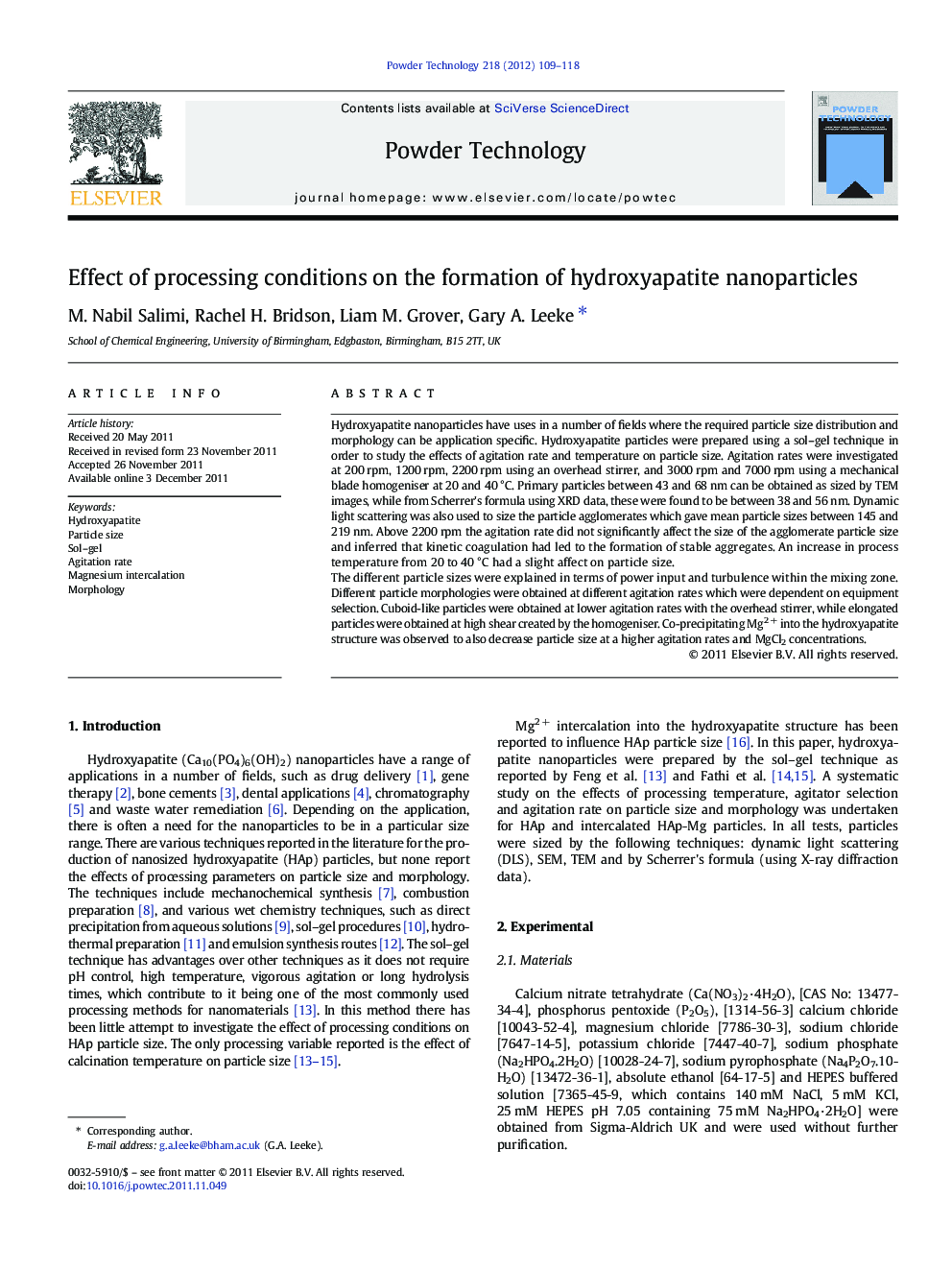| کد مقاله | کد نشریه | سال انتشار | مقاله انگلیسی | نسخه تمام متن |
|---|---|---|---|---|
| 237357 | 465702 | 2012 | 10 صفحه PDF | دانلود رایگان |

Hydroxyapatite nanoparticles have uses in a number of fields where the required particle size distribution and morphology can be application specific. Hydroxyapatite particles were prepared using a sol–gel technique in order to study the effects of agitation rate and temperature on particle size. Agitation rates were investigated at 200 rpm, 1200 rpm, 2200 rpm using an overhead stirrer, and 3000 rpm and 7000 rpm using a mechanical blade homogeniser at 20 and 40 °C. Primary particles between 43 and 68 nm can be obtained as sized by TEM images, while from Scherrer's formula using XRD data, these were found to be between 38 and 56 nm. Dynamic light scattering was also used to size the particle agglomerates which gave mean particle sizes between 145 and 219 nm. Above 2200 rpm the agitation rate did not significantly affect the size of the agglomerate particle size and inferred that kinetic coagulation had led to the formation of stable aggregates. An increase in process temperature from 20 to 40 °C had a slight affect on particle size.The different particle sizes were explained in terms of power input and turbulence within the mixing zone. Different particle morphologies were obtained at different agitation rates which were dependent on equipment selection. Cuboid-like particles were obtained at lower agitation rates with the overhead stirrer, while elongated particles were obtained at high shear created by the homogeniser. Co-precipitating Mg2 + into the hydroxyapatite structure was observed to also decrease particle size at a higher agitation rates and MgCl2 concentrations.
Hydroxyapatite nanoparticles have uses in a number of fields where the required particle size distribution and morphology can be application specific. Hydroxyapatite particles were prepared using a sol–gel technique in order to study the effects of agitation rate and temperature on particle size. Different particle sizes and morphologies were obtained at different agitation rates and temperatures.Figure optionsDownload as PowerPoint slide
Journal: Powder Technology - Volume 218, March 2012, Pages 109–118